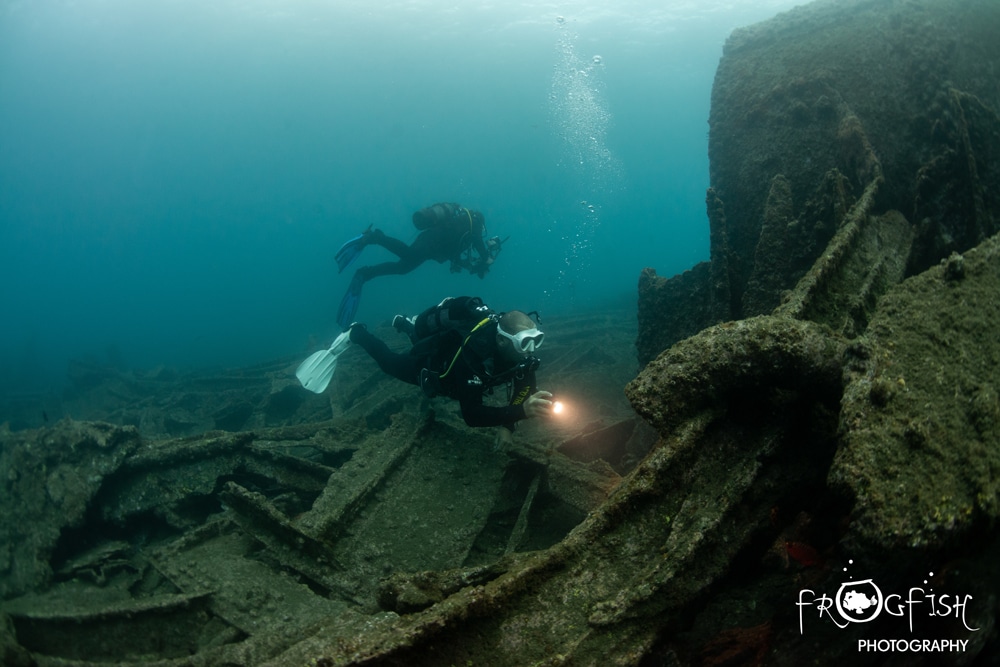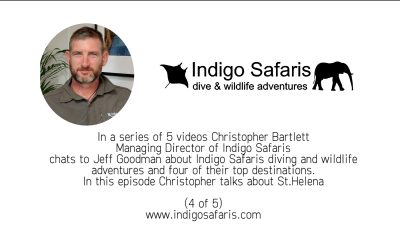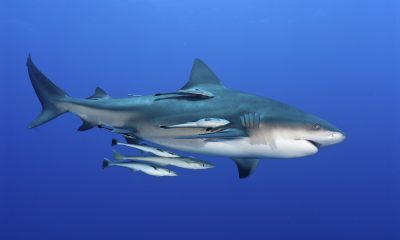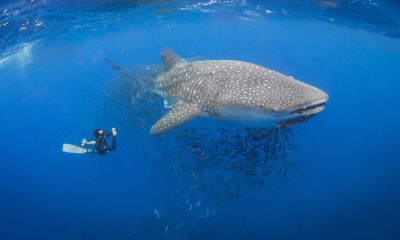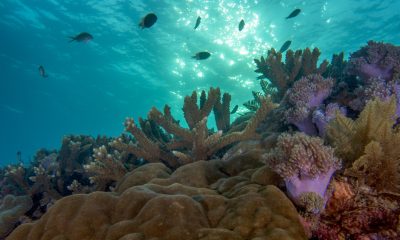Blogs
Dive into history in St Helena

Our visit to St Helena was instigated by a story that revolves around one particular wreck – the DarkDale, but over a few days of diving we soon discovered that the coastline offers those who love a little history behind their dives a host of other opportunities. We dived four of the seven listed wreck dives on offer. Some were sunk deliberately to create artificial reefs and others met their watery end in more unfortunate circumstances. Our first wreck dive off the rugged coast of this remote island was on the Papanui.
The Papanui lies in just a few meters of water just in front of the harbour and some of its structure (the stern post) even sticks out above the water, so this is an easy going dive and could even be snorkelled. The wreck sank in 1911 after a fire broke out on board. The captain drove it as close to the island as possible and then evacuated the crew safely, but the ship was lost. It is a big wreck site and the artifacts still on board this 131m long steamer built in 1898 is incredible. It is also now home to a host of marine life and we could have spent hours exploring the site over several dives.
The Darkdale wreck has a special place in history as the first British ship to be sunk in WWII south of the equator. It was struck by by a German U-Boat on the 22nd October 1941 and her casualties are remembered on the cenotaph in the harbour. She lies in deeper water just in front of the harbour with the shallowest point at around 33m. Once again, a feature of St Helena diving, she was covered in the endemic Cunningfish, a beautiful white butterfly fish that creates swirling clouds around all of the wrecks.
We also dived two artificial reefs, the Bedgellet which was damaged in a storm and sunk in 2001, and the Frontier which was a drug smuggling vessel sunk in 1994.
Both these artificial reefs are now home to marine life living around the structures and within the nooks and crannies within. Mobula Rays pass by this area and so you can combine diving the wreck with looking out into the blue for pelagic encounters, or head inshore to explore the caverns that line the coast.
We did not get to dive the White Lion wreck, a cargo ship sunk in a conflict with the Portuguese in 1613. Whilst there is not much left to see, the ship was rumoured to be carrying diamonds and whilst no-one has admitted to finding any – it must be worth a visit!
If you want a diving destination that is a little different, then St Helena is well worth a visit. We loved it. Find out more about our trip in the latest edition of Dive Travel Adventures in shop now, or online by clicking here.
For more information visit:
St Helena Tourism: www.sthelenatourism.com
Dive Saint Helena: www.divesainthelena.com
All images and text by Frogfish Photography
Equipment Used
- Olympus OMD EM-1 MKII
- Nikon D800
- Nauticam housings
- INON strobes
Blogs
Jeff chats to… Christopher Bartlett, MD of Indigo Safaris, about scuba diving and safaris in Africa (5 of 5)

![]() In the last in this exclusive series of five videos, Jeff Goodman, Scubaverse Editor-at-Large, chats to Christopher Bartlett, Managing Director of Indigo Safaris, about their diving and wildlife adventures, and four of their top destinations. In this episode Christopher talks about Africa.
In the last in this exclusive series of five videos, Jeff Goodman, Scubaverse Editor-at-Large, chats to Christopher Bartlett, Managing Director of Indigo Safaris, about their diving and wildlife adventures, and four of their top destinations. In this episode Christopher talks about Africa.
For more information, please visit www.indigosafaris.com
Rather listen to a podcast? Click on this link to listen HERE.
Blogs
Jeff chats to… Christopher Bartlett, MD of Indigo Safaris, about scuba diving in St Helena (4 of 5)
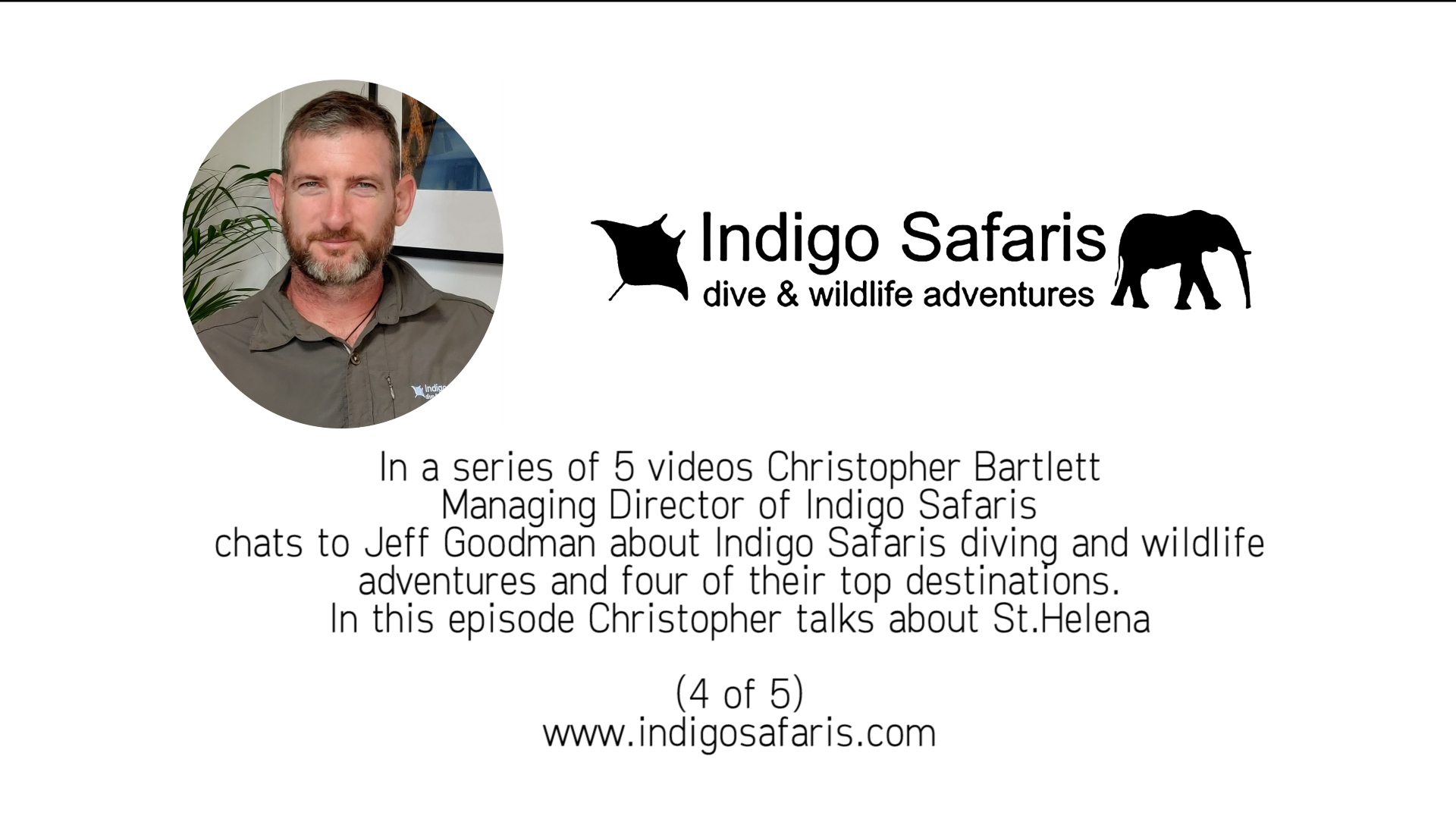
![]() In the fourth in this exclusive series of five videos, Jeff Goodman, Scubaverse Editor-at-Large, chats to Christopher Bartlett, Managing Director of Indigo Safaris, about their diving and wildlife adventures, and four of their top destinations. In this episode Christopher talks about St Helena.
In the fourth in this exclusive series of five videos, Jeff Goodman, Scubaverse Editor-at-Large, chats to Christopher Bartlett, Managing Director of Indigo Safaris, about their diving and wildlife adventures, and four of their top destinations. In this episode Christopher talks about St Helena.
For more information, please visit www.indigosafaris.com
Rather listen to a podcast? Click on this link to listen HERE.



